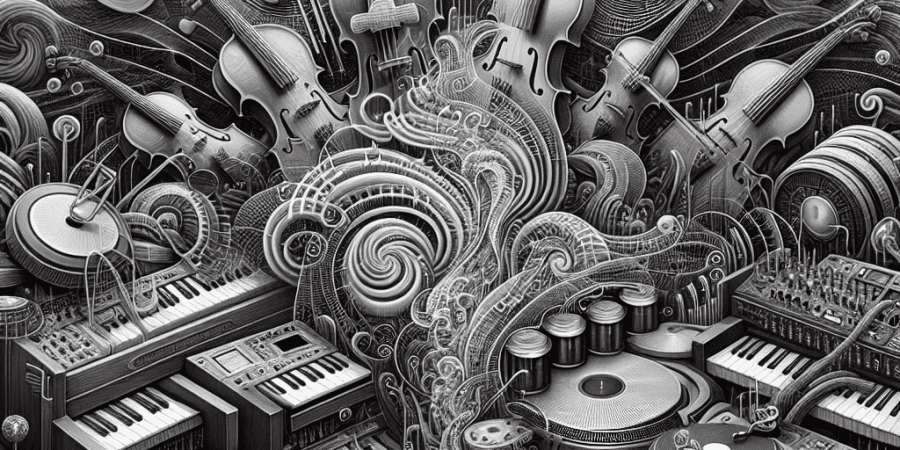Analyzing the Use of Classical Instruments in Electronic Music
Music, much like fashion, often sees trends from the past being revived and reimagined for contemporary tastes. In the vast and diverse landscape of electronic music, there has been an exciting trend of incorporating classical instruments. This fusion of old and new not only creates unique soundscapes but also bridges cultural and temporal gaps in music appreciation. Join us as we delve into the harmonious marriage of classical instruments and electronic beats.
From Beethoven to Bass Drops: The Evolution
The integration of classical instruments in electronic music is not just a recent phenomenon. Early pioneers of electronic music, like Kraftwerk and Jean-Michel Jarre, experimented with orchestral elements. However, this fusion has evolved significantly, with modern artists creating intricate compositions that pay homage to classical roots while embracing the versatility of electronic production.
Why Classical Instruments? The Appeal
The allure of classical instruments in electronic music lies in their rich tones and timeless appeal. Here’s why artists are increasingly drawn to this fusion:
- Rich, Organic Sounds: Classical instruments provide a warmth and depth that can be challenging to recreate with purely synthetic sounds.
- Emotional Resonance: The history and emotional weight carried by instruments like the violin or piano can bring a sophisticated, evocative layer to electronic tracks.
- Contrast and Texture: The juxtaposition of smooth strings with pulsating beats creates an engaging and dynamic listening experience.
Iconic Tracks and Artists
Numerous tracks in the electronic genre have masterfully integrated classical instruments. Let’s explore a few notable examples:
- Daft Punk – “Veridis Quo”: This track from the album ‘Discovery’ elegantly blends electronic grooves with classical harpsichord melodies.
- ODESZA – “Say My Name”: Featuring lush string arrangements, this song beautifully demonstrates why classical instruments are at home in electronic music.
- Lindsey Stirling – “Crystallize”: A violin virtuoso, Lindsey seamlessly combines her classical prowess with thumping electronic beats to create electrifying compositions.
Production Techniques and Challenges
Incorporating classical instruments into electronic music is an art that requires meticulous attention to detail. Producers often tackle several challenges when blending these elements:
- Recording Quality: Achieving high-fidelity recordings of classical instruments is crucial. Many producers opt for professional studios to capture the nuances and richness of the instruments.
- Sound Mixing: Balancing the natural acoustics of classical instruments with synthesized sounds demands skillful mixing to ensure neither element overpowers the other.
- Arrangement: Creating a seamless flow between classical and electronic sections requires inventive arrangements and a deep understanding of both musical worlds.
Future Trends and Innovations
The future of classical instruments in electronic music is bright and filled with potential. As technology advances, we can expect even more seamless integrations and innovative productions:
- Hybrid Synths: New synthesizers that blend digital and acoustic sounds allow real-time manipulation of classical tones, offering endless creative possibilities.
- Virtual Orchestras: With advancements in virtual instruments, producers can now access incredibly realistic orchestral libraries, making high-quality classical sounds more accessible.
- Collaborations: Expect more collaborations between electronic producers and classical musicians, fostering a new wave of genre-defying compositions.
Conclusion: The Timeless Melody
The use of classical instruments in electronic music is a testament to the timeless nature of these instruments and their ability to adapt and thrive within modern genres. This fusion not only honors the past but also propels music into exciting, uncharted territories. So next time you hear a synthesizer and a violin sharing the stage, take a moment to appreciate the beautiful symphony of history and innovation at play.
Music, after all, is a universal language that knows no bounds—temporal or otherwise.
